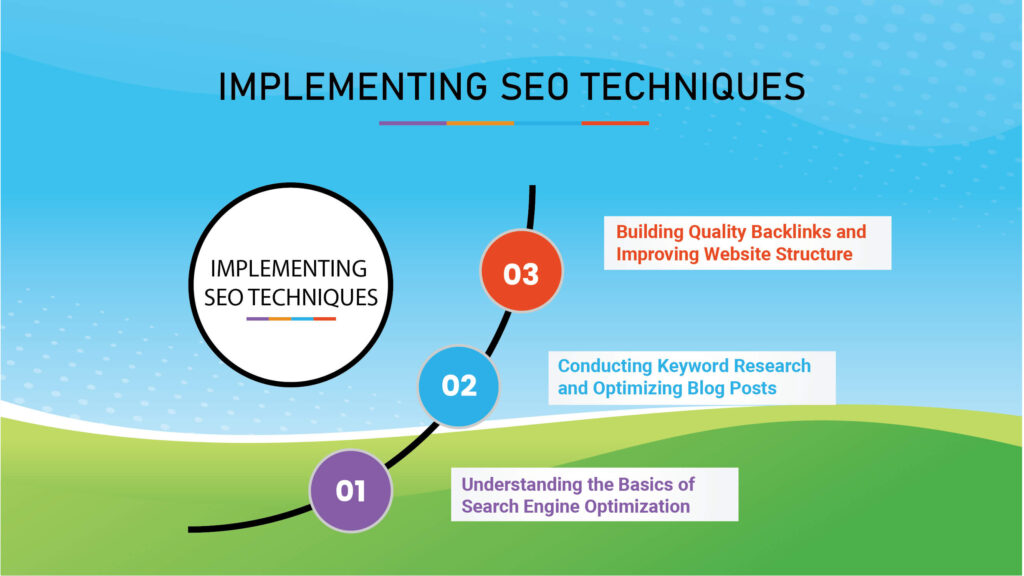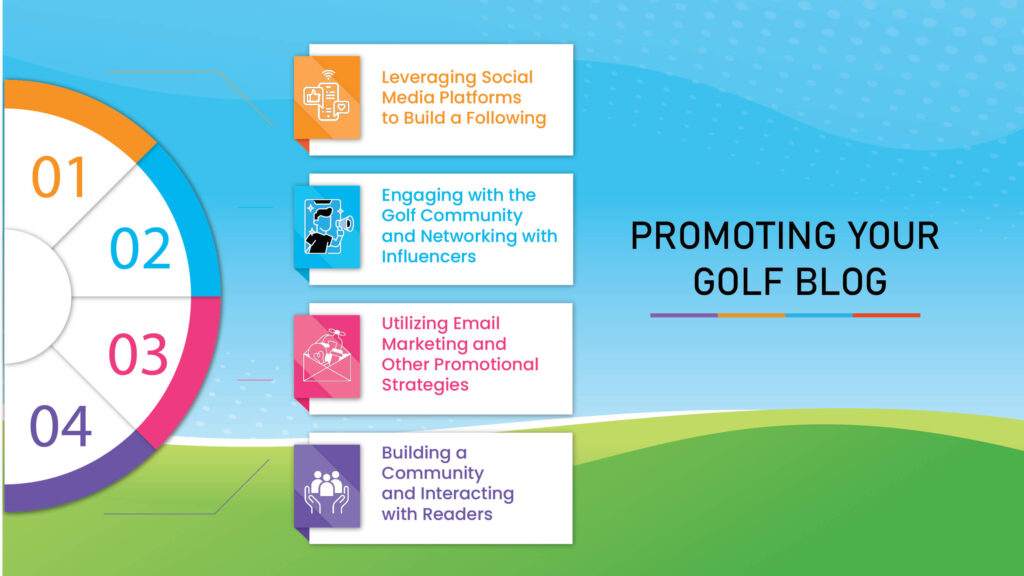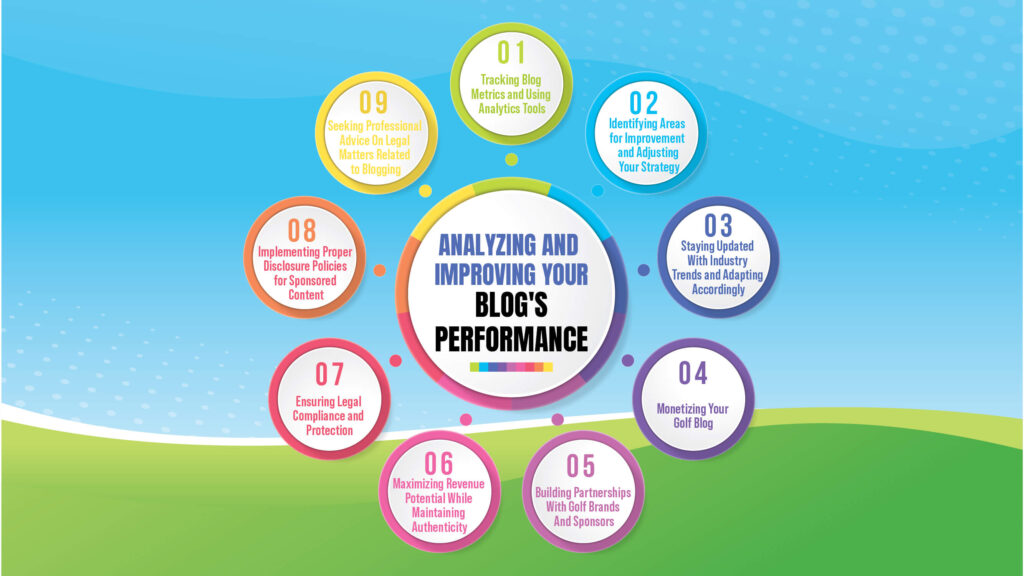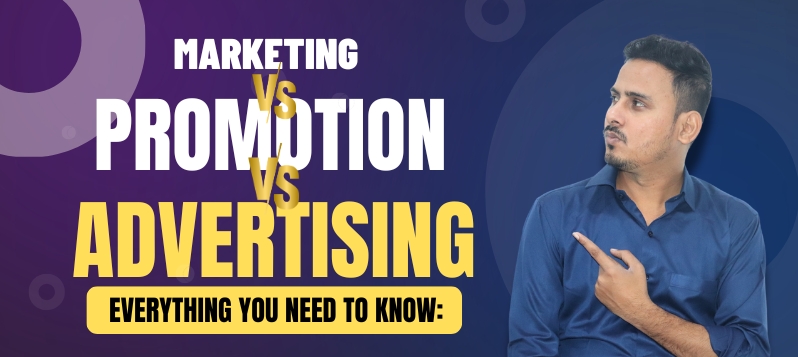Introduction
In today’s digital era, blogging has become an effective technique for sharing information, opinions, and experiences with a wide audience. Golf blogging, specifically, holds significant importance within the golfing community.
It allows the player and fans to connect with each other and allow them to get engaged in conversations about the sport they love.
Golf blogging provides a platform for individuals to share their knowledge, insights, and perspectives on various aspects of golf which includes equipment reviews, course recommendations, tournament analysis, and golfing tips.
Also Read: Best Podcast on Business Strategy
Benefits of starting a golf blog
- Sharing your passion: Starting a golf blog gives you the opportunity to express your love for the sport and share your enthusiasm with a like-minded audience
- Building a community: With the help of Blog, you can connect with other golfers, establish relationships, and build a community of golf enthusiasts and can share your common interests and engage in discussions.
- Developing expertise: As you research, write, and share golf-related content regularly, you will get more knowledge and understanding of the sport, making you more knowledgeable in that sport.
- Networking opportunities: Blogging can open doors in making new networking opportunities with industry professionals, golf equipment manufacturers, golf course owners, and fellow golf bloggers. These connections can lead to collaborations, sponsorships, or other exciting opportunities.
- Monetization potential: If your blog provides more value and attracts a substantial audience, you may have the opportunity to monetize your blog through advertising, sponsored content, affiliate marketing, or even creating and selling your own golf-related products.
Also Read: Best Programmatic advertising platforms
Overview of the blog creation process:
- Choose a niche: Focus on one particular niche for your golf blog. This could be anything from course reviews, equipment analysis, instructional content, or personal golfing experiences. Identifying a niche helps you differentiate your blog and target a specific audience.
- Select a blogging platform: Choose a suitable platform to host your blog. Some of the most preferred blogging platforms are WordPress, Blogger, and Squarespace. Do consider its ease of use, customization options, and cost.
- Set up your blog: Register a domain name that reflects your blog’s theme or your name as a golf blogger. Then, set up your blog on the chosen platform by customizing its appearance and configuring the essential elements.
- Create compelling content: Keep up with your high-quality and engaging content related to golf. Which includes written articles, tutorials, reviews, videos, podcasts, or interviews, to provide more and more value to your readers and engage them with your content.
- Promote your blog: Consider social media platforms, email marketing, and networking to promote your blog and to attract more and more audience. Do connect with other golf bloggers, participate in online golfing communities, and leverage SEO strategies to increase visibility.
- Engage with your audience: Respond to comments promptly and also encourage discussions to build relationships with your audience. This interaction helps foster a sense of community and loyalty among your audience.
- Continually improve: Analyze your blog’s performance regularly, and gather feedback, and make improvements based on user preferences and trends. Stay up to date with the latest developments in the golfing world to provide fresh and relevant content.
To start a golf blog it requires some much dedication, consistent effort, and a genuine passion for the sport. By following these steps, you can create a successful golf blog.
Also Read: Why SEO Audit is Important Enhancing Your Online Success
How to Create a Successful Golf Blog
1. Choosing Your Niche:
Before looking into how to effectively create a gold blog, it’s important to identify your target audience. First of all try to understand who you want to reach with your content, as it will help you tailor your blog accordingly. Consider the following factors when defining your target audience:
- Demographics: Age, gender, location.
- Skill level: Are you targeting beginners, the intermediary or advanced golfers?
- Interests and preferences: What aspects of golf are they interested in? Is it equipment, technique, course reviews, professional tournaments, or something else?
- Goals and challenges: What are the goals and challenges your target audience faces? Are they looking to improve their golfing strategy, find the best golf courses, or stay updated on the latest golfing news?
Also Read: Targeting Small Business Owners on Facebook
2. Narrowing down your focus within the golf industry:
Once you get a clear idea of your target audience, Now you can effectively focus within the golf industry. Here are a few approaches to consider:
- Golf instruction: Give tips, techniques, and tutorials to help golfers improve their game. This can include articles, videos, or even personalized coaching services.
- Equipment reviews: Give reviews about golf clubs, balls, accessories, and other equipment. And also do offer insights on the latest blog, do a comparison of different brands, and provide recommendations based on performance and budget.
- Golf travel and course reviews: Share your experiences and recommendations for golf courses around the world. Provide the valuable insights of course conditions, difficulty levels, and notable features to help golfers plan their next golfing destination.
- Golf news and analysis: Cover all the professional tournaments and latest news of the golf industry and analysis of the latest happenings in the world of golf. Offer your unique perspective and engage readers in discussions about the sport.
- Golf lifestyle and fashion: Explore the fashion and lifestyle aspects of golf, including clothing trends, golfing accessories, fitness tips for golfers, and more.
Remember, choosing a niche is about finding your target audience so according to their preference do prepare the blogs. It’s important to select a niche that excites you and allows you to provide valuable content while catering to the interests of your readers.
Also read: The Cons of Using Tumblr for marketing
3. Defining Your Blog’s Goals:
To give your golf blog a good direction, it’s important to establish its purpose and objectives. Consider the following:
- Educate and inform: Do you want to provide valuable information, tips, and insights to help your audience improve their golf game or stay updated on the latest golfing news?
- Inspire and entertain: Are you aiming to inspire your readers with stories, experiences, and engaging content that sparks their passion for golf?
- Build a community: Do you want a community of golf enthusiasts and want to connect, share the experiences, and engage in meaningful discussions?
- Monetize and generate income: Are you looking to monetize your blog through various avenues, such as advertising, sponsored content, or selling your own golf-related products?
Also Read:User Acquisition vs. Traffic Acquisition
4. Setting realistic expectations for growth and engagement:
While it’s exciting to envision rapid growth and high engagement, it’s important to set realistic expectations for your blog. Consider the following factors:
- Time and effort: Building a successful blog takes a lot of time, consistency, and dedication. Always remember growth and popularity can’t be achieved in one night.
- Audience building: It takes time to attract and build your audience. You just focus on creating quality content, promoting your blog, and engaging with your readers to gradually increase your reach.
- Engagement and interaction: Build engagement by responding to comments, asking questions, and actively participating in discussions. It may take time to build an engaged community, so be patient and persistent.
- Analytics and metrics: Regularly do monitor your blog’s performance through analytics tools. Set specific, measurable goals related to traffic, engagement, or conversions, and track your progress over time.
Also Read: Best Social Media Platforms for Restaurants
5. Creating a mission statement for your blog:
As per the studies and business analysis of Sujit Shukla, Crafting a mission statement helps you to show your audience the actual purpose and values of your blog. It serves as a guiding statement for your content creation and engagement strategies. When creating your mission statement, consider the following:
- Your target audience: For which type of audience you are creating your blog for, and what are their needs and interests?
- Unique value proposition: What sets your blog apart from others in the golfing niche? What unique value or perspective do you offer to your audience?
- Core values: What principles and values guide your content creation and interactions with your audience?
- Long-term vision: What do you hope to achieve with your blog in the long run? How do you want your blog to impact the golfing community?
By defining your blog’s goals, setting realistic expectations, and crafting a mission statement, you establish a solid foundation for your golf blog and align your efforts towards creating meaningful content and building an engaged community.
Also Read: How to Target Seniors on Facebook
6. Selecting a Blogging Platform:
There are several popular blogging platforms to choose from, each with its own set of features and benefits. Here’s an overview of a few commonly used platforms:
- WordPress: WordPress is a highly flexible and also one of the widely used content management systems (CMS) that powers a significant portion of the internet. It also offers self hosted versions (WordPress.org) and a hosted version (WordPress.com) allowing easy customization and control.
- Blogger: Blogger is a free blogging platform owned by Google. It is known for its simplicity and user-friendly interface, making it an excellent choice who is in the beginning stage of blogging. However, it has fewer customization options compared to other platforms.
- Squarespace: Squarespace is basically a website builder that offers elegant and visually appealing templates. It has an all in one solution for creating and managing a blog or website, including hosting and domain registration.
- Wix: Wix is another popular website builder that has drag-and-drop functionality, which makes it easy to customize the appearance of your blog. It also provides various templates and plugins to improve your blog functionality.
Also Read: Tik-Tok Ads Vs Facebook Ads
Evaluating features, customization options, and ease of use
When selecting a blogging platform, consider the following factors:
- Features and functionality: Get a deep knowledge of the features and tools provided by the platform, such as the ability to customize layouts, add plugins or widgets, integrate social media, and optimize for search engines.
- Customization options: Determine how much control you have over the design and layout of your blog. Check for platforms that offer a wide range of templates, themes, and customization options to reflect your brand and style.
- Ease of use: Consider the platform’s user interface and how comfortable you are able to navigate and manage the blog in the platform. A user-friendly interface not only saves your time but also makes the blogging process smoother.
- Scalability: Consider your long-term goals for your blog. Will the platform be able to help you to achieve your goals to grow the blog? Look for scalability options, like the ability to handle increased traffic or add additional features.
1. Making an informed decision based on your needs and goals:
To make an informed decision about which platform to choose and set your needs and goals as a blogger:
- Consider your technical skills: If you have experience and immense knowledge of coding, a platform like WordPress.org might be really flexible. If looking for a simple performing setup, a hosted platform like WordPress.com or Blogger could be a better fit.
- Assess your budget: Set a budget for hosting, domain registration, and also for some other additional features or plugins that you may require. Some platforms give free options while others have subscriptions.
- Research user reviews and experiences: Read reviews and seek feedback from other bloggers who have already used the platform and ask them how their experience was.
- Test out the platforms: Take advantage of free trials and get a feel for their interface, features, and customization options. This will help you determine which platform aligns best with your needs and preferences.
Ultimately, you have to choose your platform based on your specific needs, goals, and comfort level with technology. Consider the features, customization options, ease of use, scalability, and budget to make an informed decision that sets you up for success with your golf blog.
Also Read: Google Shopping Ads Vs Search Ads
2. Choosing a Domain Name and Hosting:
The domain name you choose for your golf blog plays a vital role in creating a strong online presence. Here’s why a memorable and relevant domain name is important:
- Brand identity: As you know Your domain name represents your brand and leaves a first and the last impression to your website visitors. Choose a name that aligns with your theme, purpose, or identity of your golf blog.
- Easy to remember: A memorable domain name makes it easier for visitors to revisit your brand. Avoid confusing and lengthy names that may be difficult to remember.
- Search engine optimization (SEO): A relevant domain name that includes keywords related to golf can improve your blogs search visibility.
- Credibility and professionalism: A well-chosen domain name enhances your blog’s credibility and professionalism. It shows that you take your blog seriously and are committed to delivering valuable content.
Also Read: Google Business Page for Realtors
3. Researching available domain names and extensions:
When researching and selecting a domain name for your golf blog, consider the following tips:
- Brainstorm keywords: Research for keywords related to golf and also do consider your blog’s niche and selling points. Use these keywords as a starting point for generating domain name ideas.
- Keep it simple and concise: Choose a domain that is easy to spell, pronounce, and type. Try to avoid hyphens, numbers, or confusing spellings that may frustrate your visitors.
- Check domain availability: Check on the domain registry websites for the availability of your desired name. Ensure the domain name is not already taken or trademarked.
- Consider domain extensions: Domain extensions are the suffixes that come after the domain name, such as .com, .net, .org, etc. The .com extension is the most commonly used and widely recognized. However, consider other extensions like .golf or country-specific extensions (.us, .uk) to align with your blog’s theme or target audience.
Also Read: Google Business Page for Realtors
4. Selecting a reliable hosting provider for your blog:
Selecting a reliable hosting provider for your blog is one of the toughest tasks. You have to consider following factors when selecting a hosting provider:
- Reliability and uptime: Look for a hosting provider that guarantees a high uptime percentage ensuring that your blogging website remains accessible all the time.
- Speed and performance: Select hosting provider that offers fast loading speeds and optimized server performance. As you know Slow-loading websites can negatively impact user experience and search engine rankings.
- Scalability and resources: Assess the hosting provider’s scalability options, considering your blog’s potential growth. Ensure they offer sufficient storage, bandwidth, and resources to accommodate your needs.
- Customer support: Reliable customer support is essential, as in case you encounter technical issues or have questions about your hosting service you can easily call upon your hosting provider.
- Security measures: Ensure the hosting provider is offering robust security measures to protect your blog from potential threats, such as malware attacks or hacking attempts. This includes regular backups, SSL certificates, and firewalls.
Note : Before choosing a reliable hosting provider conduct a proper research of hosting providers, read reviews, and compare their offerings before making a decision. Consider factors like pricing, customer reviews, and the specific needs of your golf blog to choose a hosting provider that suits your requirements.
By selecting a memorable and relevant domain name and a reliable hosting provider, you lay a strong foundation for your golf blog’s online presence and ensure a positive user experience for your visitors.
Also Read: Best Social Media Platforms for Restaurants
Designing Your Golf Blog
1. Choosing a visually appealing and user-friendly theme:
The theme of your golf blog creates an overall look of your website. When selecting a theme, do consider the following:
- Visual appeal: Choose a theme with a design that matches your blog’s theme and attracts your target audience. Look for clean and professional designs and enhance the overall user experience.
- Responsiveness: Ensure the theme is mobile-friendly and responsive, ensuring it matches other devices. This is crucial for providing a seamless experience for your visitors, regardless of the device they’re using.
- Customization options: Select themes that give a customization option and are easy to customize, such as the ability to change colors, fonts, and layouts. This allows you to personalize your blog and make it unique to your brand.
Also Read: Pinterest Ads Vs Facebook Ads
2. Customizing the layout, colors, and branding elements:
To make your golf blog visually appealing and consistent with your brand, consider the following customization options:
- Logo and branding: First of all work on your logo. Create a professional logo that represents your blog’s identity and place it prominently on your website. Use consistent branding elements like colors, fonts, and imagery throughout your blog.
- Layout and structure: Customize the layout of your blog to highlight important content, such as featured posts, popular articles, or recent updates. Organize your content in an easy to navigate manner.
- Colors and typography: Choose colors that are visually appealing and resonate with your brand. Select fonts that are easy to read and suit the tone of your blog. Consistency is very important in fonts as it enhances the overall aesthetic appeal of your blog.
3. Incorporating essential pages (About, Contact, Privacy Policy):
To provide essential information to your website visitors and comply with legal requirements, include the following pages on your golf blog:
- About us page: Introduce yourself and share your ultimate aim or mission of starting a blog. Include information about your past, experience in golf, and what readers can expect from your content.
- Contact page: Provide a way for readers, potential partners, or advertisers to connect you. Include a contact form or list your email address and social media handles for communication purposes.
- Privacy Policy: Create a privacy policy page to inform visitors about how you are collecting and using your personal data. It is very important to keep a privacy policy page, if you are collecting any data through forms or cookies on your blog.
These essential pages help you to build trust within your audience, provide important information, and ensure compliance with legal regulations. Customizing the design and layout of these pages to align with the overall look of your blog maintains consistency and a professional appearance.
Last but not the least, always remember, a visually appealing and user-friendly design improves the overall user experience of your golf blog. Customize your theme, layout, colors, and branding elements to create a unique and engaging website that reflects your blog’s identity and goals.
Also Read: BlueHost Website Builder Vs Elementor
Creating Engaging Content
To create engaging content for your golf blog, Conduct a detail research on trending topics and perform keyword analysis. Here’s how you can approach it:
- Stay updated on industry news: Follow golf publications, websites, and forums to stay informed about the latest trends, news, and events in the golfing world.
- Keyword research: Take the help of various keyword research tools like Google Keyword Planner, SEMrush, or Ahrefs to identify relevant keywords and phrases related to golf that have high search volumes and relatively low competition.
- User intent analysis: Understand the intent behind specific keywords and the questions or problems your target audience may have, based on that tailor your content effectively.
1. Developing a content strategy and editorial calendar:
A Proper content strategy and editorial calendar will help you plan and organize your blog’s content effectively. Consider the following steps:
- Define your content goals: Determine the objectives of your blog and how your content will align with them. For example, do you want to provide instructional golf tips, share golf course reviews, or cover golfing events? Show your audience what’s your main moto for starting a blog.
- Identify target audience interests: Understand your target audience’s needs, preferences, and key points. Conduct surveys, engage with your audience on social media, and take regular feedback to gain insights into what content they find valuable.
- Plan content themes and formats: Research for various other blog post topics, videos, infographics, or other content formats that align with your goals and audience interests. Organize these ideas into themes or categories.
- Create an editorial calendar: Create a schedule for publishing your content. Assign specific topics or themes to each publishing date, ensuring a consistent flow of fresh content.
2. Writing high-quality blog posts that resonate with your audience:
When creating blog posts, do mainly focus on high quality and valuable content that perfectly resonates with your audience. Consider the following tips:
- Compelling introductions: Hook you readers with an engaging introduction, also try to grab their attention by clearly stating the purpose or benefit of reading the post.
- Clear and concise writing: Use clear, concise language to convey your message effectively. Break up content into sections with headings, bullet points, or numbered lists for easy readability.
- Incorporate visuals: Use relevant images, videos, or infographics to enhance your content and make it visually appealing. Visual elements can help break up text and engage readers.
- Provide actionable advice: Give practical tips, techniques, or advice that readers can apply to their golf game. Offer step-by-step instructions, examples, or case studies to demonstrate the effectiveness of your advice.
- Engage with readers: Encourage comments, questions, and discussion by ending your blog posts with a call to action. Respond to comments promptly and engage with your readers to build a sense of community.
Remember, consistency is key when creating engaging content. Regularly publish high-quality posts that address your audience’s interests and needs. By conducting research, developing a content strategy, and writing valuable blog posts, you’ll attract and retain readers who find your content informative and engaging.
Utilizing Visual and Multimedia Elements
1. Importance of images, videos, and infographics in golf blogging:
Visual and multimedia elements play a significant role in enhancing the engagement and overall quality of your golf blog. Here’s why they are important:
- Visual appeal: Images, videos, and infographics make your blog visually appealing and help break up text, making it easier for readers to consume information.
- Enhanced understanding: Visual elements can effectively convey complex concepts, golf techniques, or course layouts, allowing readers to grasp information more easily.
- Increased engagement: Multimedia elements can capture the attention of your audience and keep them engaged for longer periods. They provide an interactive and immersive experience that can boost user engagement and encourage social sharing.
- SEO benefits: Optimized images and videos can improve your blog’s search engine visibility. By using descriptive file names, alt text, and relevant tags, you can increase the chances of your visual content appearing in search results.
2. Sourcing and optimizing visual content for your blog:
When sourcing and optimizing visual content for your golf blog, consider the following tips:
- Original visuals: Create your own images, videos, and infographics whenever possible. This allows you to showcase your unique perspective and maintain consistency with your blog’s branding.
- Stock photo websites: Utilize reputable stock photo websites such as Unsplash, Pixabay, or Pexels to find high-quality, royalty-free images that align with your content. Make sure to adhere to the usage terms specified by the image providers.
- Video platforms: Create or curate videos related to golf and embed them in your blog posts. YouTube is a popular platform for golf-related videos, and you can embed videos from YouTube or other platforms directly into your blog posts.
- Image optimization: Optimize your images by resizing them appropriately for web use, compressing them to reduce file size without sacrificing quality, and adding relevant alt text and captions. This helps improve page loading speed and accessibility while providing search engines with valuable information.
- Infographic creation: Use online tools like Canva, Piktochart, or Venngage to create visually appealing infographics that present golf-related data, statistics, or tips in a visually appealing and easily digestible format.
3. Exploring podcasting or video content creation for enhanced engagement:
Podcasting and video content can provide a more dynamic and interactive experience for your audience. Consider the following options:
- Podcasting: Start a golf-themed podcast where you can discuss golf tips, interview industry experts, or share insights about golfing techniques and strategies. Platforms like Anchor, Libsyn, or Podbean can help you host and distribute your podcast.
- Video content creation: Create video content such as instructional videos, course vlogs, equipment reviews, or golf travel guides. Platforms like YouTube or Vimeo allow you to share and embed your videos in your blog posts.
Podcasting and video content creation can attract a new audience segment and provide an opportunity for deeper engagement. Experiment with these mediums and see what resonates with your audience. Ensure your podcast or video content aligns with your blog’s theme, branding, and objectives.
By incorporating visual and multimedia elements into your golf blog, you enhance its visual appeal, engagement, and overall quality. Utilize images, videos, and infographics to support your content, optimize them for optimal performance, and consider exploring podcasting or video content creation to provide a more interactive experience for your audience.
Implementing SEO Techniques

1. Understanding the basics of search engine optimization:
Search engine optimization (SEO) is the practice of optimizing your golf blog to improve its visibility and ranking in search engine results. Here are some basics to keep in mind:
- Keyword optimization: Conduct keyword research to identify relevant keywords related to golf. Incorporate these keywords naturally into your blog posts’ titles, headings, content, and meta descriptions.
- On-page optimization: Optimize your blog posts by ensuring they have descriptive and keyword-rich titles, well-structured headings, properly formatted URLs, and optimized meta descriptions. Use relevant alt tags for images and ensure your content is well-organized and easily readable.
- Quality content: Create high-quality, valuable content that is relevant to your target audience. Engaging and informative content is more likely to attract organic traffic and gain backlinks from other websites.
- User experience: Improve the user experience of your blog by optimizing its loading speed, ensuring it is mobile-friendly and responsive, and using a clean and easy-to-navigate design.
- Technical optimization: Implement technical SEO practices such as optimizing your website’s sitemap, using proper header tags, improving internal linking, and ensuring your website is crawlable by search engine bots.
2. Conducting keyword research and optimizing blog posts:
Keyword research is crucial for optimizing your blog posts and improving their visibility in search engine results. Follow these steps:
- Identify relevant keywords: Use keyword research tools to find keywords related to golf that have a high search volume and lower competition. Focus on long-tail keywords that are specific to your niche.
- Incorporate keywords strategically: Once you have identified relevant keywords, incorporate them naturally into your blog posts’ titles, headings, and content. Avoid keyword stuffing, as it can negatively impact your blog’s ranking.
- Optimize meta tags: Write compelling meta titles and meta descriptions that include your target keywords. These meta tags appear in search engine results and influence click-through rates.
- Provide valuable content: Ensure your blog posts provide valuable and informative content that satisfies user intent. Use keywords to guide your content creation, but prioritize the quality and relevance of the information you provide.
3. Building quality backlinks and improving website structure:
Backlinks are links from other websites to your golf blog and are an important factor in search engine rankings. Consider these strategies:
- Create valuable content: Focus on creating high-quality, informative content that other websites would find useful and want to link to.
- Guest blogging: Write guest posts for other golf-related blogs or websites, including a link back to your own blog. This can help you build backlinks and increase your blog’s visibility.
- Outreach and networking: Reach out to other golf bloggers, influencers, or industry websites and establish relationships. Collaborate on content, participate in link exchanges, or ask for backlinks where relevant.
- Improve website structure: Ensure your website has a clear and organized structure with easy navigation. Use internal linking to connect related content, making it easier for users and search engines to find and navigate your blog.
By implementing these SEO techniques, you can improve your golf blog’s visibility in search engine results and attract organic traffic from users searching for golf-related content.
Promoting Your Golf Blog

1. Leveraging social media platforms to build a following:
Social media platforms can be powerful tools for promoting your golf blog and building a following. Here are some strategies to consider:
- Choose relevant platforms: Identify the social media platforms where your target audience is most active, such as Facebook, Twitter, Instagram, or LinkedIn.
- Share valuable content: Regularly post engaging and informative content from your blog on social media. Use eye-catching visuals, captions, and relevant hashtags to increase visibility and engagement.
- Engage with your audience: Respond to comments, messages, and mentions on social media. Initiate conversations, ask questions, and encourage discussion to build relationships and foster a sense of community.
- Collaborate with influencers: Identify influential individuals or brands in the golf industry and explore collaboration opportunities. This could involve guest posting on their blogs, co-creating content, or participating in influencer marketing campaigns.
2. Engaging with the golf community and networking with influencers:
Engaging with the golf community and networking with influencers can help you expand your reach and build credibility. Consider the following approaches:
- Participate in golf forums and communities: Join online golf forums or communities where golf enthusiasts gather. Contribute valuable insights, answer questions, and establish yourself as a knowledgeable and trustworthy resource.
- Comment on other golf blogs: Engage with other golf blogs by leaving thoughtful and relevant comments on their posts. This can help you gain visibility, drive traffic back to your blog, and initiate connections with fellow bloggers.
- Collaborate with other bloggers or influencers: Reach out to other golf bloggers or influencers and explore opportunities for collaboration. This could include guest blogging, co-hosting events, or cross-promoting each other’s content.
3. Utilizing email marketing and other promotional strategies:
Email marketing is an effective way to promote your golf blog and engage with your audience. Consider these strategies:
- Build an email list: Offer a newsletter or free resource related to golf that readers can access in exchange for their email addresses. Use opt-in forms on your blog to collect email addresses and grow your subscriber list.
- Send regular newsletters: Send newsletters to your subscribers with updates on new blog posts, exclusive content, or special promotions. Personalize your emails and segment your list to deliver relevant content to different subscriber groups.
- Offer incentives: Provide exclusive discounts, giveaways, or freebies to your subscribers as a way to reward their loyalty and encourage engagement.
- Cross-promote with other bloggers or brands: Collaborate with other golf bloggers or brands to cross-promote each other’s content or offer joint promotions. This can help you expand your reach to new audiences.
In addition to these strategies, consider utilizing search engine optimization (SEO) techniques, attending golf events or tournaments, and leveraging online advertising or influencer marketing campaigns to further promote your golf blog.
4. Building a Community and Interacting with Readers:
Encouraging comments and fostering discussions on your blog
Building an engaged community of readers is crucial for the success of your golf blog. Here’s how you can encourage comments and foster discussions:
- Enable comments: Ensure that commenting is enabled on your blog posts, making it easy for readers to leave comments and engage with your content.
- Ask questions: End your blog posts with thought-provoking questions related to the content. Encourage readers to share their opinions, experiences, or ask further questions in the comments section.
- Respond to comments: Regularly monitor the comments section and actively engage with your readers. Respond to their comments, answer their questions, and acknowledge their contributions. This demonstrates your interest in fostering a community and encourages others to join the conversation.
- Moderate effectively: Maintain a respectful and inclusive environment by moderating comments and addressing any inappropriate or spammy content promptly. This helps create a safe space for meaningful discussions.
Responding to reader feedback and addressing inquiries
Interacting with your readers goes beyond the comments section. Here’s how you can respond to reader feedback and address inquiries effectively:
- Monitor emails and contact forms: Regularly check your email inbox and respond promptly to reader inquiries, feedback, or collaboration requests. Provide helpful and personalized responses to show that you value their input and engagement.
- Social media engagement: Monitor your social media platforms for messages, mentions, and comments related to your blog. Respond to reader inquiries or feedback on these platforms, demonstrating your commitment to engaging with your audience.
- Incorporate reader suggestions: Pay attention to the feedback and suggestions provided by your readers. Use their input to improve your blog, create new content, or address topics of interest to them. This helps build a sense of community and shows that you value their opinions.
Organizing contests, giveaways, or interactive events
Contests, giveaways, and interactive events can foster engagement and excitement within your community. Consider the following ideas:
- Contests and giveaways: Organize golf-related contests or giveaways where readers can participate to win prizes such as golf equipment, apparel, or event tickets. This encourages active participation and increases the chances of social media sharing, expanding your blog’s reach.
- Q&A sessions or live chats: Host live question and answer sessions or live chats where readers can interact with you in real-time. This can be done through social media platforms, webinars, or dedicated chat platforms. It allows for direct engagement, sharing of knowledge, and building personal connections with your audience.
- Virtual events or meetups: Organize virtual events or meetups where readers can connect with you and other golf enthusiasts. This can be in the form of webinars, virtual workshops, or online networking sessions. It creates a sense of community and provides an opportunity for meaningful interactions.
By actively encouraging comments, responding to reader feedback and inquiries, and organizing interactive events, you can build a thriving community around your golf blog. This not only enhances reader engagement but also strengthens your blog’s reputation and authority within the golfing community.
Analyzing and Improving Your Blog’s Performance

1. Tracking blog metrics and using analytics tools:
Tracking and analyzing blog metrics is essential for understanding your blog’s performance and identifying areas for improvement. Consider the following:
- Use analytics tools: Utilize tools like Google Analytics to track important metrics such as website traffic, page views, bounce rate, average session duration, and user demographics. These insights will help you understand your audience and their behavior on your blog.
- Monitor engagement metrics: Look at metrics like comments, social media shares, and time spent on page to gauge reader engagement. This data can provide insights into the effectiveness of your content and user experience.
- Track conversion metrics: If you have specific goals for your blog, such as driving newsletter sign-ups or product sales, track conversion metrics to assess your success in achieving those goals. This can be done through conversion tracking in Google Analytics or other marketing tools.
2. Identifying areas for improvement and adjusting your strategy:
Once you have analyzed your blog’s performance, you can identify areas that require improvement and make adjustments to your strategy. Consider these steps:
- Assess content performance: Look at the performance of individual blog posts and identify the ones that resonate well with your audience. Determine the topics, formats, or styles that perform best and prioritize creating similar content.
- Review user feedback: Pay attention to comments, emails, and social media feedback from your readers. Take note of suggestions or areas where readers express dissatisfaction or confusion. Use this feedback to address any issues and improve the user experience.
- Experiment with new approaches: Don’t be afraid to try new strategies or formats to keep your blog fresh and engaging. This could involve incorporating different content types (videos, podcasts, infographics), exploring guest posting opportunities, or partnering with influencers. Continuously monitor the impact of these experiments and adjust your approach based on the results.
3. Staying updated with industry trends and adapting accordingly:
The golf industry is constantly evolving, and it’s important to stay updated with industry trends and adapt your blog accordingly. Consider the following:
- Follow golf industry news: Stay informed about the latest developments, news, and trends in the golf industry. This will allow you to create timely and relevant content that resonates with your audience.
- Monitor competitor blogs: Keep an eye on other golf blogs in your niche. Observe their content strategies, engagement tactics, and any new approaches they are implementing. This can inspire new ideas and help you stay competitive.
- Attend industry events: Participate in golf industry events, conferences, or webinars to stay connected with industry professionals, gain insights, and expand your network. These events can provide valuable knowledge and inspiration for your blog.
By regularly analyzing your blog’s performance, making data-driven adjustments, and staying updated with industry trends, you can continuously improve your golf blog and provide a better experience for your readers.
4. Monetizing Your Golf Blog:
Exploring different monetization strategies (advertising, sponsored content, affiliate marketing)
There are various ways to monetize your golf blog. Here are a few common strategies:
- Advertising: Displaying ads on your blog can generate revenue through ad networks like Google AdSense or direct partnerships with advertisers. Optimize ad placement and consider using relevant, non-intrusive ads to maintain a positive user experience.
- Sponsored content: Collaborate with golf brands or sponsors to create sponsored content, such as product reviews, sponsored posts, or brand partnerships. Ensure transparency by clearly disclosing sponsored content to maintain trust with your audience.
- Affiliate marketing: Recommend golf products, equipment, or services through affiliate marketing. Include affiliate links in your blog posts, and earn a commission for any sales generated through those links. Choose reputable affiliate programs and only promote products you genuinely endorse.
- Digital products: Create and sell digital products tailored to the golfing community, such as e-books, online courses, instructional videos, or membership programs. Leverage your expertise to offer valuable content that golf enthusiasts are willing to pay for.
5. Building partnerships with golf brands and sponsors:
Developing partnerships with golf brands and sponsors can enhance your monetization efforts. Consider these steps:
- Build a strong brand and audience: Focus on creating high-quality content, building an engaged community, and establishing your authority in the golf niche. Brands and sponsors are more likely to partner with bloggers who have a dedicated following and a positive reputation.
- Research and reach out: Identify golf brands and sponsors that align with your blog’s niche and target audience. Research their products, values, and previous collaborations to ensure compatibility. Reach out to them with a well-crafted pitch highlighting the benefits of partnering with your blog.
- Demonstrate value: Showcase the unique value your blog can provide to brands and sponsors. Highlight your audience demographics, engagement metrics, and the potential exposure their brand will receive through your blog and social media channels.
- Negotiate mutually beneficial partnerships: When negotiating partnerships, consider factors such as compensation, deliverables, disclosure guidelines, and exclusivity agreements. Ensure that the terms of the partnership align with your blog’s values and maintain authenticity.
6. Maximizing revenue potential while maintaining authenticity:
It’s important to balance monetization efforts with maintaining authenticity and credibility. Consider the following:
- Focus on quality and value: Prioritize creating high-quality content that genuinely benefits your audience. Focus on providing value and building trust, as this will keep your readers engaged and attract potential sponsors and advertisers.
- Disclose sponsored content: Maintain transparency by clearly disclosing any sponsored content or affiliate links in accordance with relevant laws and regulations. This helps maintain trust with your audience and ensures legal compliance.
- Select partners and products carefully: Only partner with brands or promote products that align with your blog’s values and are relevant to your audience. Avoid promoting products solely for the sake of monetization, as it may compromise your authenticity and credibility.
- Diversify revenue streams: Explore multiple monetization strategies to reduce dependence on a single source of income. This can provide stability and increase revenue potential.
7. Ensuring Legal Compliance and Protection:
To ensure legal compliance and protect your blog, it’s important to understand copyright laws and intellectual property rights. Here are some guidelines:
- Copyright protection: Ensure that the content you create is original and does not infringe on the rights of others. Obtain proper permissions or licenses when using copyrighted material such as images, videos, or quotes.
- Use proper attribution: When using content created by others, provide proper attribution and credit to the original creator. This includes images, quotes, or any other copyrighted material you include in your blog posts.
- Fair use doctrine: Familiarize yourself with the concept of fair use, which allows for limited use of copyrighted material for purposes such as criticism, commentary, or educational purposes. However, be cautious and consult legal advice if you have any doubts about fair use in a specific situation.
8. Implementing proper disclosure policies for sponsored content:
Transparency and disclosure are essential when publishing sponsored content on your blog. Follow these guidelines:
- Clearly disclose sponsored content: Make it evident to your readers when a post or content is sponsored. Clearly label sponsored posts, reviews, or any content where you have received compensation or free products/services.
- Use disclosure language: Use disclosure language such as “This is a sponsored post,” “In partnership with [brand],” or “This content contains affiliate links” to inform your readers about the nature of the content and any financial relationships.
- Follow local regulations: Familiarize yourself with local regulations and guidelines regarding sponsored content and disclosure requirements. Compliance with these regulations helps maintain transparency and integrity.
9. Seeking professional advice on legal matters related to blogging:
If you have specific legal concerns or questions regarding blogging, it’s advisable to seek professional legal advice. An attorney experienced in intellectual property law and blogging regulations can provide guidance tailored to your specific circumstances.
They can help you navigate legal complexities, understand your rights and obligations, and ensure your blog operates within legal boundaries.
Final Thoughts and Next Steps
To start a successful golf blog, follow these key steps:
- Choose your niche and target audience within the golf industry.
- Define your blog’s goals and establish a clear purpose.
- Select a suitable blogging platform and secure a domain name.
- Design a visually appealing and user-friendly blog layout.
- Develop a content strategy and create high-quality, engaging posts.
- Promote your blog through social media, networking, and email marketing.
- Interact with your readers, encourage comments, and build a community.
- Monitor your blog’s performance using analytics tools and make data-driven improvements.
- Explore monetization strategies such as advertising, sponsored content, and affiliate marketing.
- Ensure legal compliance, including copyright and disclosure policies.
Encouragement and motivation for aspiring golf bloggers
To all aspiring golf bloggers, remember that starting a blog is an exciting journey that allows you to share your passion and expertise with others. Stay dedicated to creating valuable content and engaging with your audience.
Embrace challenges as opportunities for growth and improvement. Don’t compare your progress to others, but focus on your unique voice and perspective. Keep learning, stay persistent, and enjoy the process of building your golf blog.
Next steps for continued growth and success
To continue growing your golf blog, consider these next steps:
- Expand your content offerings by exploring new formats, such as videos, podcasts, or interactive elements.
- Collaborate with other golf bloggers, influencers, or industry experts to widen your reach and gain new perspectives.
- Seek feedback from your audience and adapt your content strategy accordingly.
- Build strong relationships with golf brands, sponsors, and industry professionals for potential partnerships and opportunities.
- Stay updated with the latest trends, techniques, and technology in the golf industry to keep your blog fresh and relevant.
- Continuously analyze and optimize your blog’s performance to enhance user experience and engagement.
- Regularly reassess your goals and objectives, and set new targets for growth and expansion.
- Remember, success in blogging takes time and consistent effort. Stay passionate, remain authentic, and keep evolving your blog to meet the needs and interests of your audience. Enjoy the journey and celebrate every milestone along the way.






